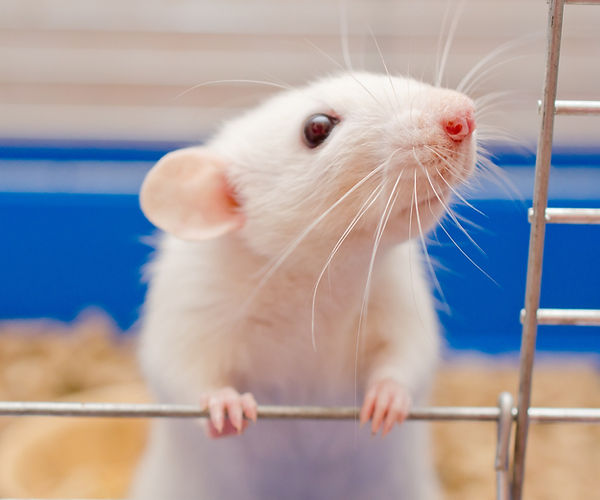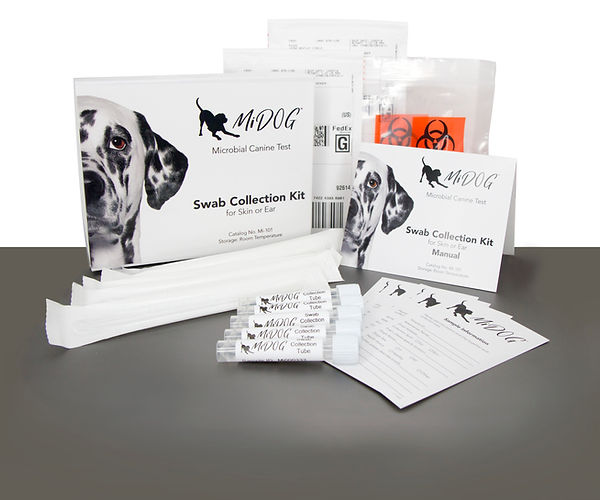
Next-Gen Sequencing technology can help improve the diagnosis and treatment of streptococcal infections.
Is your small mammal having trouble breathing? Or perhaps you notice discharge from your furry friend’s nose? If you notice these changes, it is recommended you take your pet to an exotic pet veterinarian immediately, as your small mammal may be suffering from pneumonia! As one of the most common significant diseases in small mammals, pneumonia causes inflammation of the lungs may cause death if left untreated. Small mammals like rats, mice, hamsters, gerbils, guinea pigs, pygmy hedgehogs, and more are at risk for this debilitating infection. Damp and/or humid environments provide the ideal breeding ground for pathogens that invade your small mammal’s respiratory tract, such as Bordetella bronchiseptica, Streptococcus zooepidemicus, and namely, Streptococcus pneumoniae [1,2]. Consequently, knowing the exact strain of bacteria and pathogenicity of that strain can have significant impacts on your pet’s health outcomes!
What is Streptococcus Pneumoniae?
Bacterial pneumonia infections develop when the pathogen attaches to the small mammal’s respiratory epithelium, where it inhibits ciliary movement and causes an inflammatory response, antiphagocytic activity, and dermonecrosis [3]. Understanding the causative pathogen for respiratory infections is key for early and successful treatment. Streptococcus pneumonia is transmitted by asymptomatic carriers of various species, which allows for infections to propagate unexpectedly. Streptococcus is a Gram-positive coccus that is transmitted by direct contact, aerosolization, and from fomites [4]. Streptococcalpresentations of pneumonia include:
- Oozing/discharge from nose
- Sneezing
- Difficulty breathing
- Conjunctivitis
- Fever
- Weight loss
- Depression
- Loss of appetite
- Dyspnea
- Sudden death
While streptococcal infections are the result of the complex interaction between bacterial and host factors (which greatly impact the extent and location of the infection), the bacterium’s bacterial capsule determines the serotype of the pathogen [5]. This is clinically useful because different serotypes are associated with varying degrees of pathogenicity and invasiveness. To make this even more complicated, both invasive and noninvasive strains can exist within the same serotype, making treatment particularly difficult [5]. Different serotypes also exist in different areas of the body in different species.
Thankfully, contemporary research has made significant strides in characterizing Streptococcus, as a spectrum of virulent strains has been identified using Next-Gen Sequencing (NGS). For example, one study characterizing Streptococcal pneumoniae in the mice microbiome found that the pathogen is not a part of the host nasopharyngeal microbial community during normal circumstances [6].
Preventing Infections in Small Mammals

To prevent streptococcus pneumoniae infections, it is important to practice good animal husbandry and take your pet to the veterinarian at least once a year.
Proper animal husbandry is critical to ensure that your small mammal has a strong immune system. Environmental factors like unclean cages, improper climate, lack of nutrition, and more can compromise your small mammal’s immune system and leave your furry pet susceptible to opportunistic bacteria.
Previous Diagnostic Technology for Streptococcus Pneumonia
Veterinarians recommend that small mammals visit yearly to ensure the well-being of these difficult to diagnose small mammals. Streptococcal infections may require medical intervention, with treatment ranging from fluids and oxygen therapy to antibiotic courses [2]. Treatment for respiratory infections in small mammals is particularly complex, largely because different animals may respond to treatment differentially [2]. In the past, diagnosis of pneumonia has been accomplished through history and clinical findings, radiography, and at times fluid analysis and aerobic culture and sensitivity tests. However, considering “mycotic pneumonias are usually chronic in nature”, it is important to embrace modern diagnostic technology like NGS to curb antimicrobial resistance and provide quality treatment to patients [7].
For example, a recent study characterizing the nasopharyngeal and upper respiratory microbiota of mice using 16S rRNA NGS found that age affects the composition of the upper respiratory tract microbiota and that colonization with S. pneumoniae is more disruptive of preexisting communities in older mice [6]. Moreover, this study also found potentially protective upper respiratory tract bacteria, such as Firmicutes, Proteobacteria, Bacteroidetes, an Actinobacteria [6]. This indicates the clinical applicability of using genomic sequencing to identify, analyze, and eventually treat small mammals more effectively.
Next-Gen Sequencing: MiDOG Technology in Action
Our technology is currently being used by veterinarians to treat small mammals! Meet Weiler, a guinea pig who was suffering from chronic pneumonia and was non-responsive to treatment after discontinuing medications for one week. Our diagnostic technology detected a 47.5% bacterial relative abundance of Streptococcus pneumoniae, and a 99.9% fungal relative abundance of Kazachstania pintolopesii. Moreover, our technology can help inform treatment. Below is Weiler’s antibiotic resistance panel for Streptococcus pneumoniae, which is one of the many pieces of information we send back to the veterinarian so they can make informed clinical decisions!

The image above depicts Weiler the guinea pig’s antibiotic resistance panel.
The MiDOG All-in-One Microbial Test may provide the answer to the diagnostic conundrum that streptococcal infections pose. Utilizing NGS technology to detect and quantify all microbial DNA through untargeted and comprehensive sequencing and quantitative comparisons to reference databases, the MiDOG NGS technology provides a useful opportunity to shed light on the microbial makeup of your small mammal’s infection for clinical application. The MiDOG microbiome test is a microbial identification test grounded on scientific research that provides veterinarians DNA evidence for the guided treatment of streptococcal infections.

Find out if your vet uses MiDOG before you book your next appointment!
For health-related questions about your pet, reach out to an exotic pet veterinarian.
Citations:
[1] Roberts-Steel, S., Oxley, J. A., Carroll, A., & Wills, A. P. (2019). Frequency of Owner-Reported Bacterial Infections in Pet Guinea Pigs. Animals : an open access journal from MDPI, 9(9), 649. https://doi.org/10.3390/ani9090649
[2] Quesenberry, K. and Donnelly, T., 2019. Disorders and Diseases of Guinea Pigs – All Other Pets – MSD Veterinary Manual. [online] MSD Veterinary Manual. Available at: <https://www.merckvetmanual.com/all-other-pets/guinea-pigs/disorders-and-diseases-of-guinea-pigs#:~:text=Signs%20of%20pneumonia%20include%20oozing,among%20groups%20of%20guinea%20pigs.>.
[3] Harkness, J. E., Murray, K. A., & Wagner, J. E. (2002). Biology and Diseases of Guinea Pigs. Laboratory Animal Medicine, 203–246. https://doi.org/10.1016/B978-012263951-7/50009-0
[4] Woode, G. and Mcleod, N., 1967. Control of Acute Bordetella Bronchiseptica Pneumonia in A Guinea-Pig Colony. Laboratory Animals, 1(2), pp.91-94.
[5]Borsa, N., Pasquale, M. D., & Restrepo, M. I. (2019). Animal Models of Pneumococcal pneumonia. International journal of molecular sciences, 20(17), 4220. https://doi.org/10.3390/ijms20174220
[6] Thevaranjan, N., Whelan, F. J., Puchta, A., Ashu, E., Rossi, L., Surette, M. G., & Bowdish, D. M. (2016). Streptococcus pneumoniae Colonization Disrupts the Microbial Community within the Upper Respiratory Tract of Aging Mice. Infection and immunity, 84(4), 906–916. https://doi.org/10.1128/IAI.01275-15
[7] Tonozzi, C., 2022. Pneumonia in Dogs and Cats – Respiratory System – MSD Veterinary Manual. [online] MSD Veterinary Manual. Available at: <https://www.msdvetmanual.com/respiratory-system/respiratory-diseases-of-small-animals/pneumonia-in-dogs-and-cats> [Accessed 24 March 2022].
Categories: Gerbils, Guinea Pigs, Next-Gen DNA Sequencing Technology

